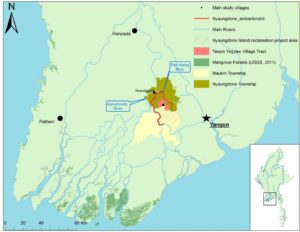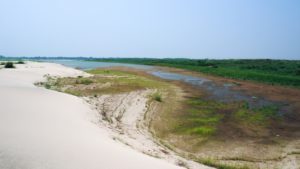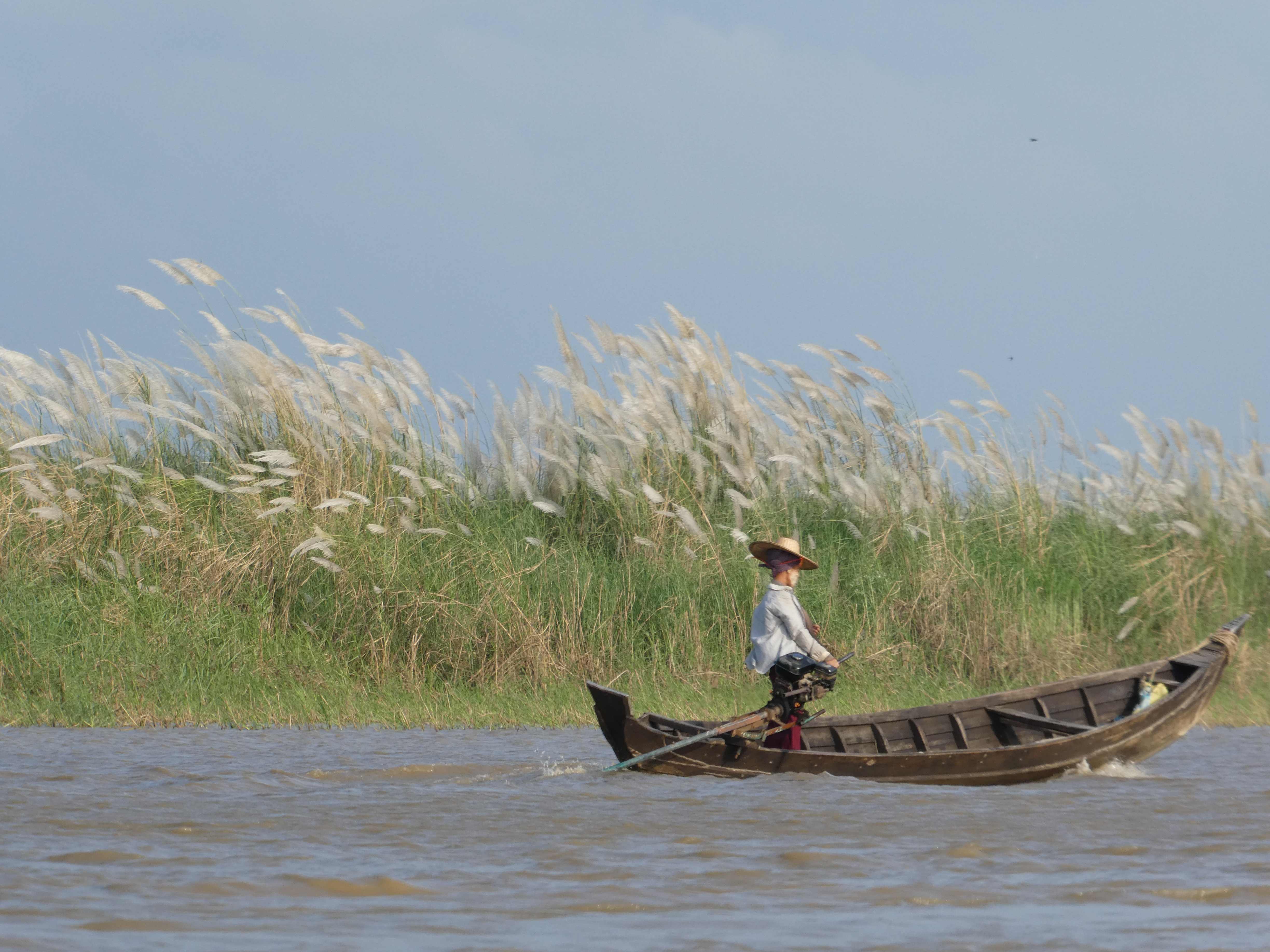In Myanmar we collaborate with anthropologists from the University of Köln in Germany through the co-supervision of a PhD Student.
Anthropological research revolves on how people live and shape a delta environment through ethnographic work in and around the “Nyaungdone Island” that has witnessed rapid and dramatic changes over the last decade. This in-depth research is replaced in the broader perspective of (1) the historical development of land and water management infrastructures in the delta (stressing the existence of iconic infrastructure such as horseshoe embankments, polders and sluice gates) and (2) current efforts supported by the Dutch cooperation that aim at developing an integrated strategy for the management of the Ayeyarwady Delta (Ivars and Venot, 2019).

Infrastructure development in the Ayeyarwady Delta shares many similarities to that of other deltas of Southeast Asia. It mostly consisted in the construction of flood control infrastructure and large-scale land reclamation projects such as polders. This is partly linked to the fact that the delta has always been enmeshed in global development and knowledge networks and, as such, has been partly shaped by outside events and foreign actors despite the political turmoil the country went through since its independence in 1948.
The research also shows that the Ayeyarwady delta has recently emerged as a new frontier for delta science and delta planning as Myanmar is going through a far reaching political transition and literally swarmed by development agencies. Dutch international development aid, supported by Dutch higher education, research organizations and consulting companies, play a key role in establishing the Ayeyarwady delta as an entity of global relevance, as it did for other deltas worldwide (Mekong and Bangladesh for instance). In that context, the Integrated Ayeyarwady Development Strategy (IADS) notably lays the groundwork for an ever extending supportive coalition to put the delta on the policy agenda, but in a rather depoliticized way. What happens in practical terms in the delta will depend on the ability of actors in the coalition to push specific agendas (Ivars and Venot, 2019).
At local level, research is grounded in a political ecology perspective. A first component of the research analyzes changing patterns of resources access and uses in the “Nyaungdone Island”. The research shows that natural resources are “made” through socially embedded historical strategies that have long led to large-scale dispossession and marginalization of small-scale farmers and capture fishermen. Land and fishery reforms that have been initiated since 2011 and the transition to civilian governments have certainly triggered significant resources re-allocation but existing cross-scale patronage networks still largely shape how these re-allocations take place. Local elites who have maintained their powerful position through relationships of capital accumulation and indebtedness are therefore among the main beneficiaries of resource re-distribution schemes but local actors are also increasingly able to navigate the legal and institutional pluralism and to strategically use the malleability of the delta’s resources (part land, part water, part rice, part fish). The Ayeyarwady delta is characterized by incessant and potentially conflicting encounters between claims & counterclaims.

The complexity and socio-environmental dynamics of resources access and use are further illustrated in a case study that combines qualitative interviews and satellite imagery analysis (Gruel, 2018) of sedimentation and erosion in three alluvial sites along the main stream of the Ayeyarwady River. The research notably investigates the multiple claims and strategies of local inhabitants to access highly volatile alluvial land whose nature and position changes over time (Three animations show the dynamics in the downstream, middle and upstream parts between 1973 and 2018).


